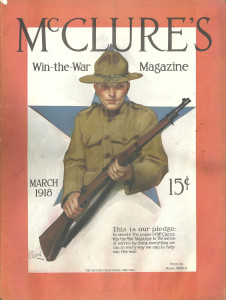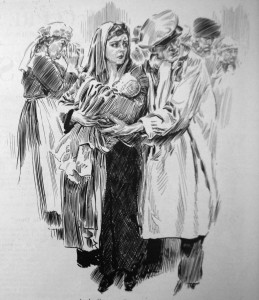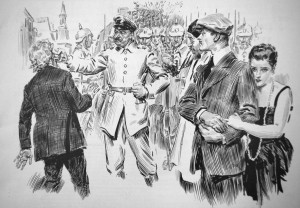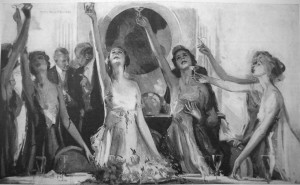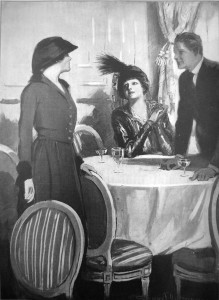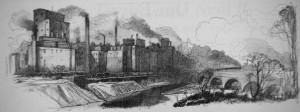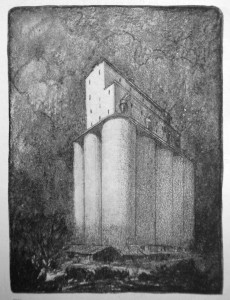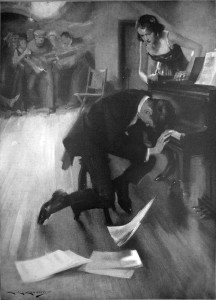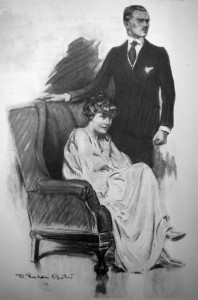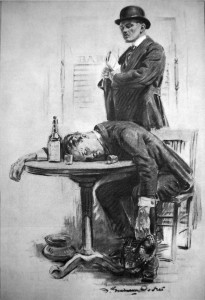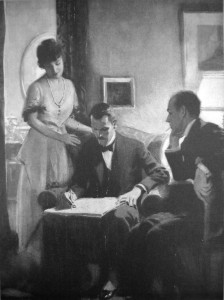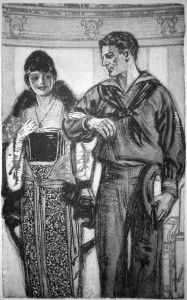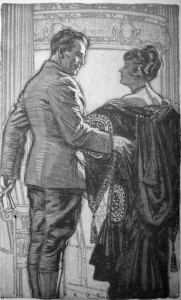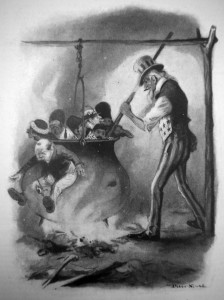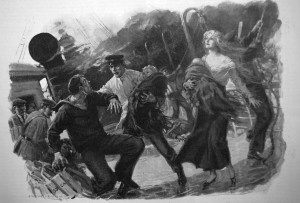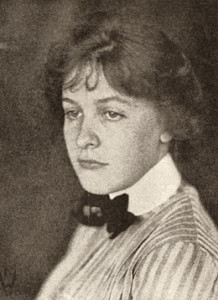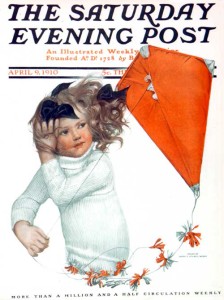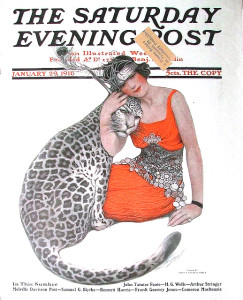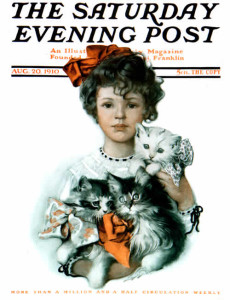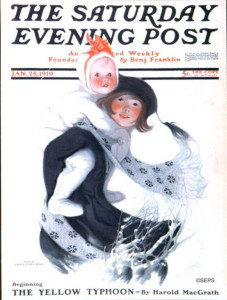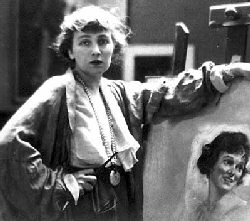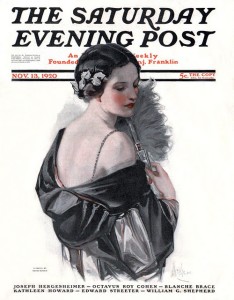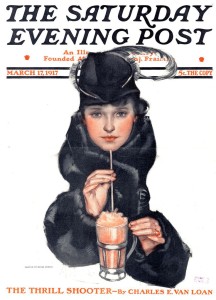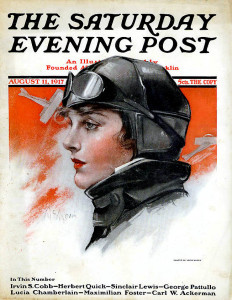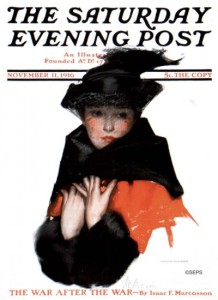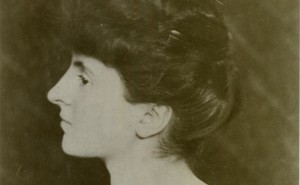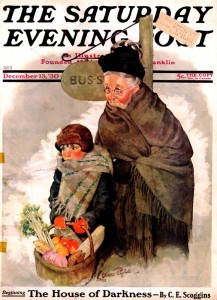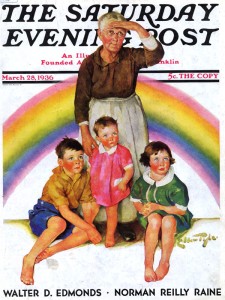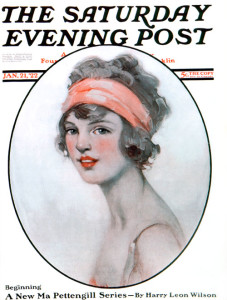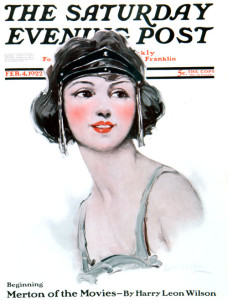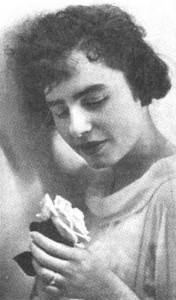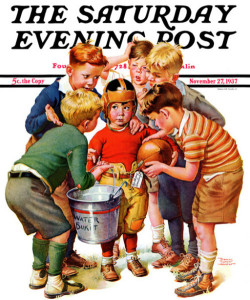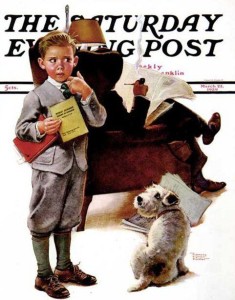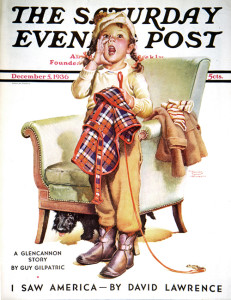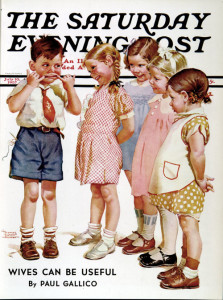McClure’s Win-the War, March 1918
McClure’s Magazine was founded by S. S. McClure and John Sanborn Phillips. It was an American illustrated monthly magazine that was published from 1893 to 1929. The magazine aimed to promote good moral and family values and is credited with starting investigative journalism.
The magazine featured both political and literary content, publishing in a serial format one chapter at a time. McClure’s published many writers we still read today, Sir Arthur Conan Doyle (Sherlock Holmes), Rudyard Kipling (The Jungle Book), Jack London (The Call of the Wild and White Fang), Robert Louis Stevenson (Treasure Island and the Strange Case of Dr Jekyll and Mr Hyde), and Mark Twain (The Adventures of Tom Sawyer and the Adventures of Huckleberry Finn).
McClure’s also published a series by Ida Tarbell, she is thought to have pioneered investigative journalism exposing the monopoly abuses of Standard Oil Company, and Ray Stannard Baker who focused on the operations and abuses of the United States Steel Corporation.
In 1911 S. S. McClure sold the magazine to creditors. It was then re-branded as a women’s magazine and ran from October 1921 to February 1922, September 1924 and April 1925, and February to May 1926. From July 1928 until March 1929, the magazine was published as the New McClure’s Magazine. The last issue was published in March 1929, after which the magazine was taken over by The Smart Set. An American literary magazine, founded by Colonel William d’Alton Mann and published from March 1900 to June 1930. The Smart Set wanted to provide sophisticated content that would reinforce the values of New York’s social elite.
World War I, the First World War, the Great War, or the War to End All Wars, lasted from July 28, 1914 to the eleventh day, the eleventh month, the eleventh hour of 1918. The United States joined the conflict on April 6, 1917 after the sinking of U.S. merchant ships and the release of the Zimmermann telegram.
The artwork for McClure’s is from a time when Adobe Photoshop was still 70 years away. The railroad was the main form of bulk transportation for people and freight on the continent. Because of the cost and difficulty of printing full color only the front and back were printed this way. The interior artwork was done by hand and published in black & white. The skill of these artist is often overlooked but VMShoppe.com would like focus on the ones in McClure’s, Win-the War, March 1918 issue.
The cover art for this issue was done by Neysa Moran McMein (1889–1949) an illustrator and portrait painter. She illustrated magazine covers, advertisements, and articles for national publications, such as McClure’s, McCall’s, The Saturday Evening Post (as seen in our previous blog post), and Collier’s. For General Mills she created the portrait of the fictional housewife “Betty Crocker”
“Triumph!”, by W.B. Trites and illustrated by James Montgomery Flagg.
“It’s the Huns!”, by H.C. Witwer and illustrated by Hamlin Gardner.
“The Super-War”, by Cleveland Moffett and illustrated by Wallace Morgan.
“New York Stuff”, by Dana Gatlin and illustrated by Clarence F. Underwood.
“Uncle Sam’s Flour Barrel”, by Edward Mott Woolley and illustrated by W.T. Benda.
“Wild Apples” [Serial], written anonymously, and illustrated by C.E. Chambers.
“The Touch on His Shoulder”, by Frederick Ivring Anderson and illustrated by F. Graham Cootes.
“Two Wives”, By Ernest Poole and illustrated by John Alonzo Williams.
“What Are These Voices?”, By Anna Steese Richardson and illustrated by Herbert Paus.
“As to Melting Pots”, by Porter Emerson Browne and illustrated by Peter Newell.
“The Man Who Knew His Place”, by James C. Young and illustrated by P.V.E. Ivory.


